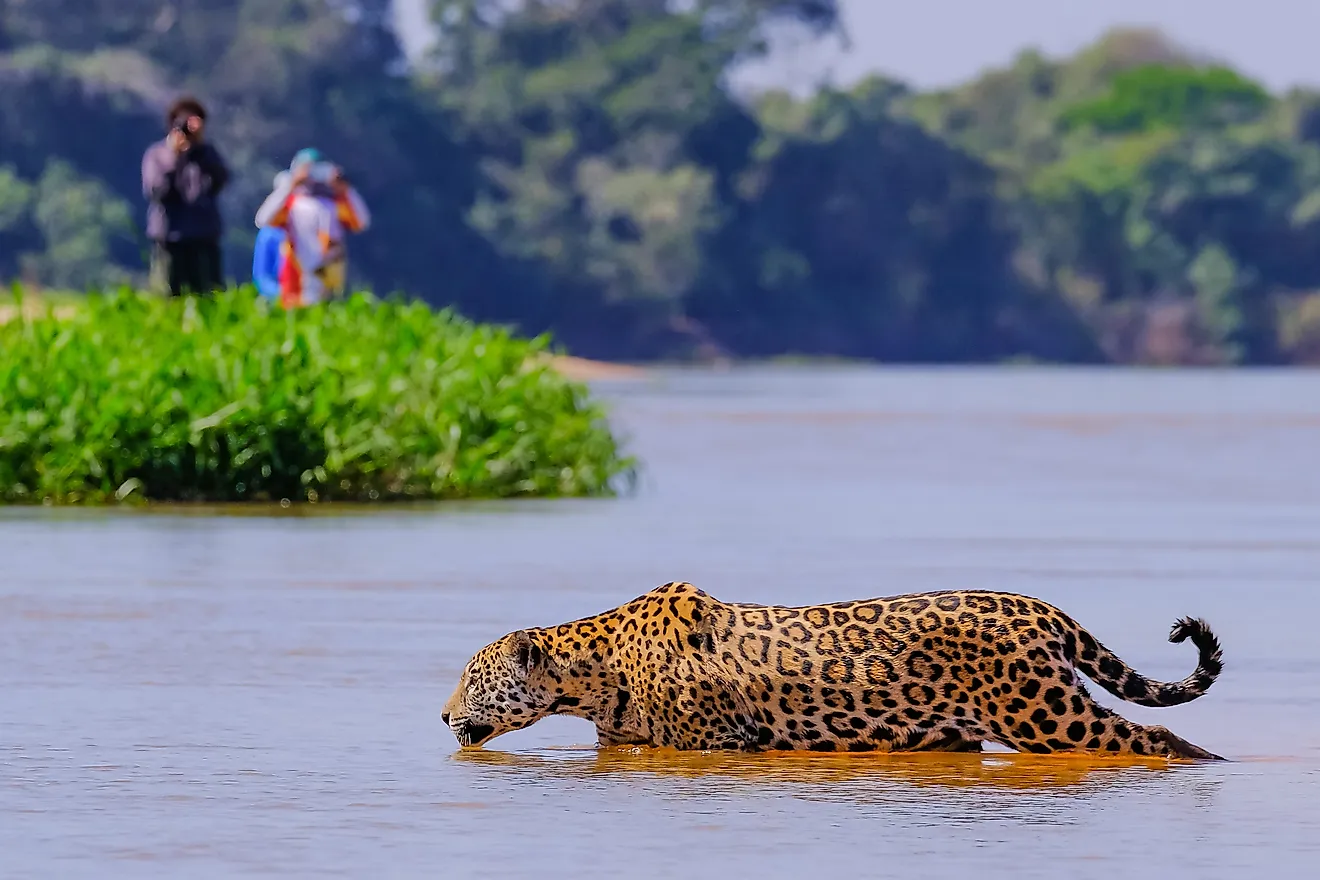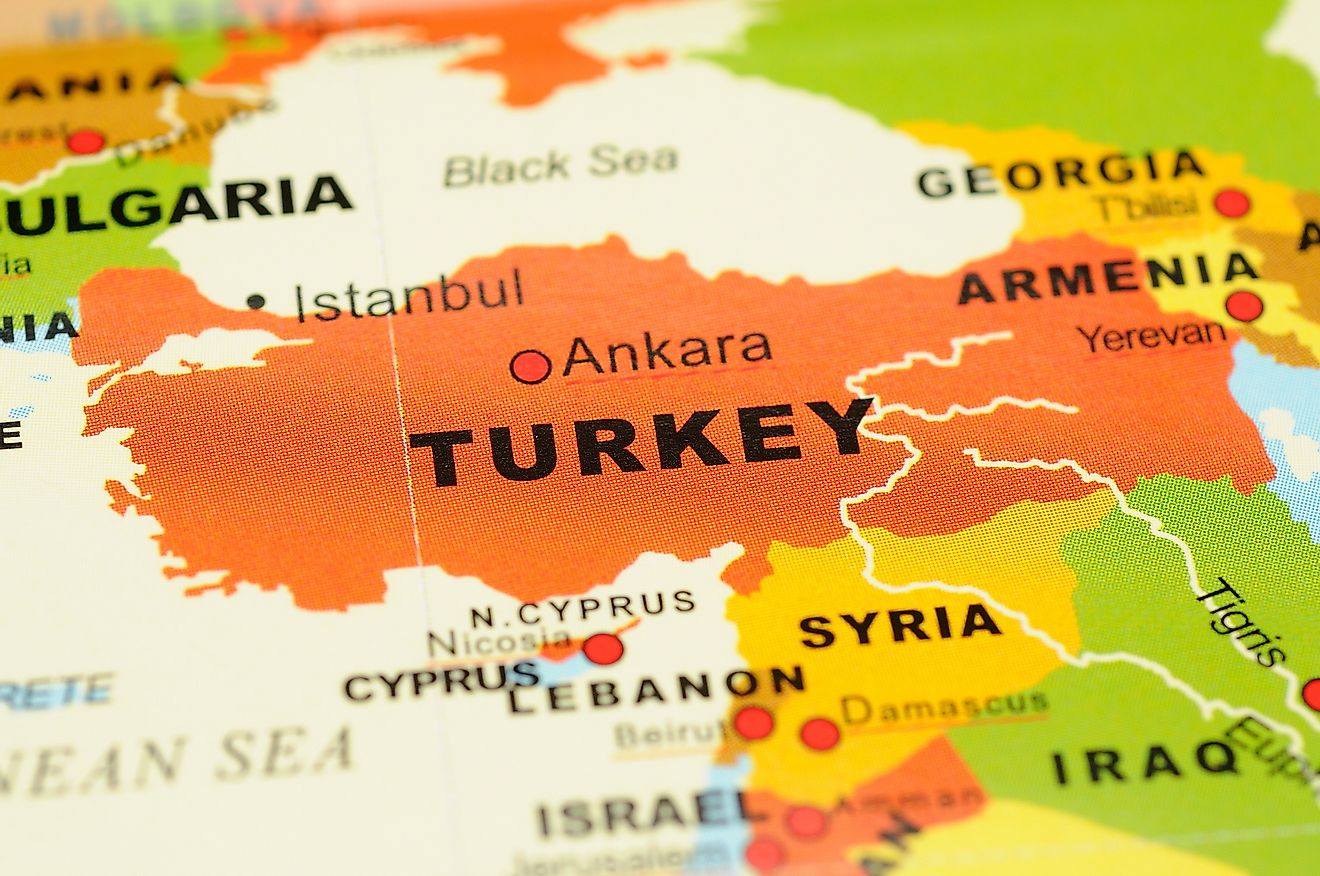The Mojave Desert
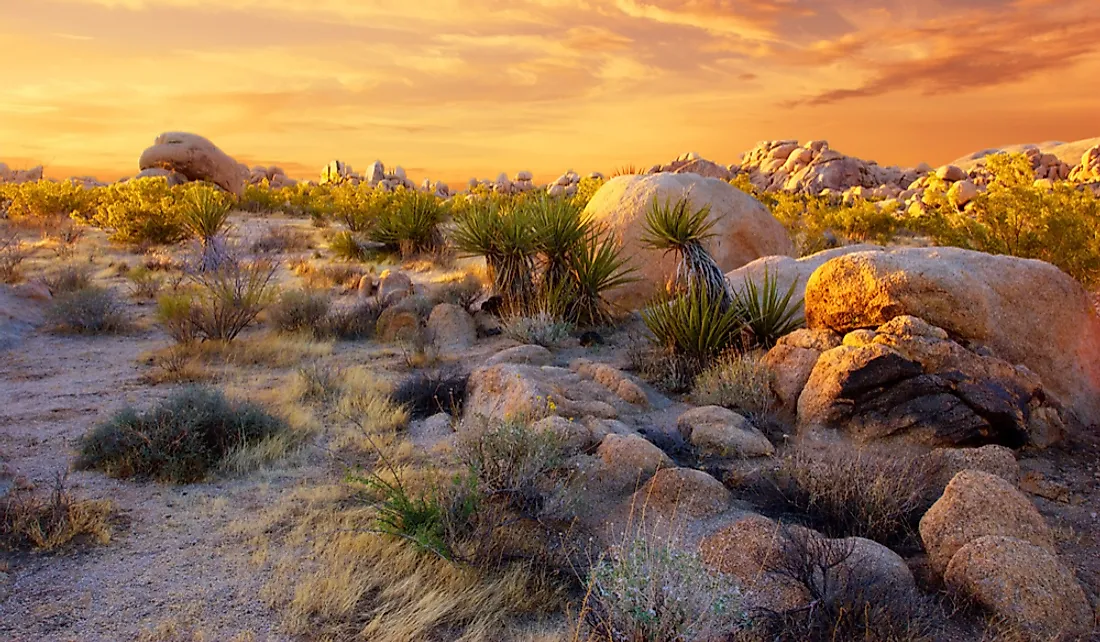
- Death Valley is the hottest place in North America, found in the Mojave Desert.
- The landscape of the Mojave Desert provided the setting for movies like Star Trek and Fear and Loathing in Las Vegas.
- The desert was named after the Indigenous Mojave Americans.
- The Mojave Desert is the smallest of the four deserts in America.
The Mojave Desert is the smallest of the four deserts in America that altogether comprise the North American Desert. However, with its unique environment, the 200 endemic plants of this region cannot be found in the surrounding deserts or anywhere else in the world. It is also no surprise that with immense stargazing experiences, singing sand dunes, wildflower fields, and Joshua tree forests, the Mojave Desert has become a popular tourist destination.
Content:
Location Of The Mojave Desert
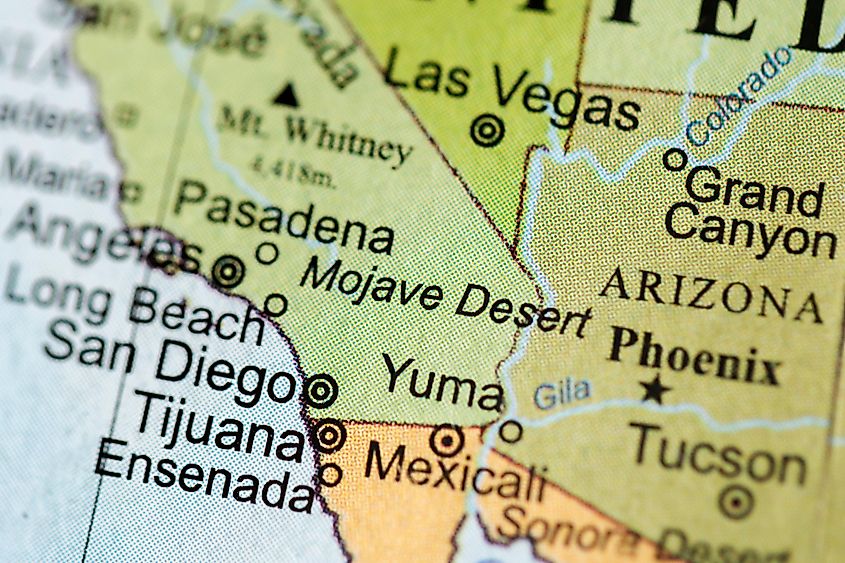
Encompassing the Death Valley, the hottest place in North America, the Mojave Desert spreads across California, south-western Utah, southern Nevada, and north-western Arizona. Stretching for over 54,000 square miles (139,860 square km) including hills and basins, it also covers parts of Los Angeles and Las Vegas.
The Tehachapi, Sierra Nevada, San Gabriel, and San Bernardino mountain ranges border the desert to the west. In the east, the desert meets with the Colorado Plateau. Its northern boundary extends into the Great Basin Desert, while the Sonoran Desert is its continuation in the south. The Mojave Desert's relatively northern location and higher elevation make it one of the cooler deserts in the country.
Topography Of The Mojave Desert
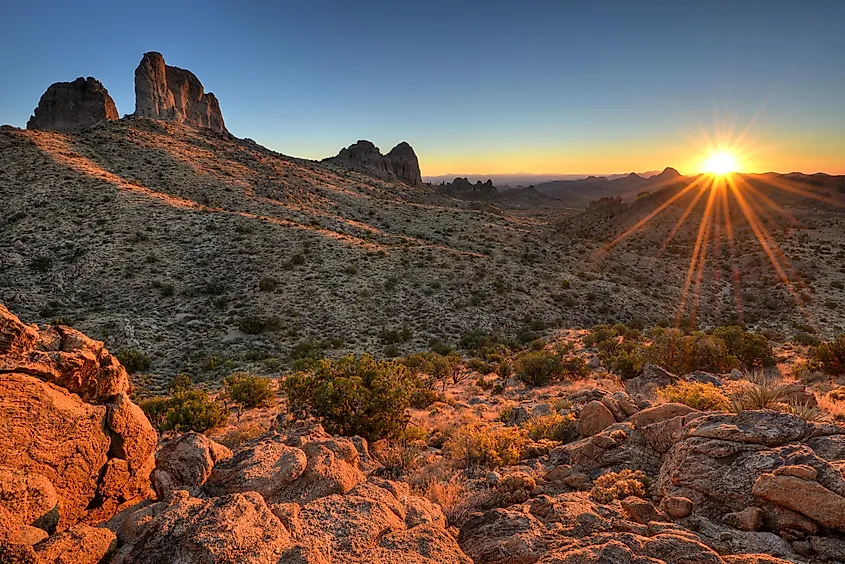
From the air, one will find that the Mojave Desert features a typical relief of peaks and basins. The main natural resources of the region, borax, potash, and salt, are produced within the sand and gravel basins, and are extracted upon draining into the central salt flats. Although not as abundant, silver, tungsten, gold, and iron deposits add up to a substantial portion of the region's wealth.
Known as a "high desert" with most of the land lying between 2,000 and 4,000 feet (610 to 1,220 m) above sea level, some extreme dips and hills make the Mojave unique to other deserts in North America. Death Valley sits at 480 feet (146 m) below the sea level, while some mountain tops reach up 5,250 feet (1,600 m) into the sky.
Climate Of The Mojave Desert
95 to 105 degrees Fahrenheit (35 to 40.5 Celsius) is the average summer temperature in the Mojave Desert, dipping to 20 or 30 Fahrenheit (-7 to -1 Celsius) during the evenings in winter. Summer months are generally considered to be from July to mid-September, while winter sets in mid-November and usually lasts into the second week of March. Although February is the wettest month, summers are subject to a seasonal monsoon.
For the most part, high winds of over 50 miles (80.5 km) per hour can only be recorded near the western mountain ranges. Keeping the winds at bay, the mountains to the west of the greater Mojave Desert also promote the arid environment. With the humidity from the Pacific Ocean blocked off, dry heat is accumulated within, and with little to no cloud formation on most days, the desert sees less than six inches (150 mm) of rain in any given year.
Made famous by the Furnace Creek where the ground surface temperature once reached 201 degrees Fahrenheit (93.4 Celsius) in July of 1972 (Temperatures measured directly on the ground may exceed air temperatures by 30 to 50 °C). Death Valley is generally subject to temperatures of up to 120 Fahrenheit air temperatures (49 Celsius) on the cusp of July to August. Wintertime in the desert is cold with sparse to heavy wet snowfalls that can cause road closure in some parts. The temperature at this time is often below freezing, as well. Interestingly, it is this cool environment that makes a comfortable home for many of the creatures found in the area.
Fauna And Flora Of The Mojave Desert
Animals
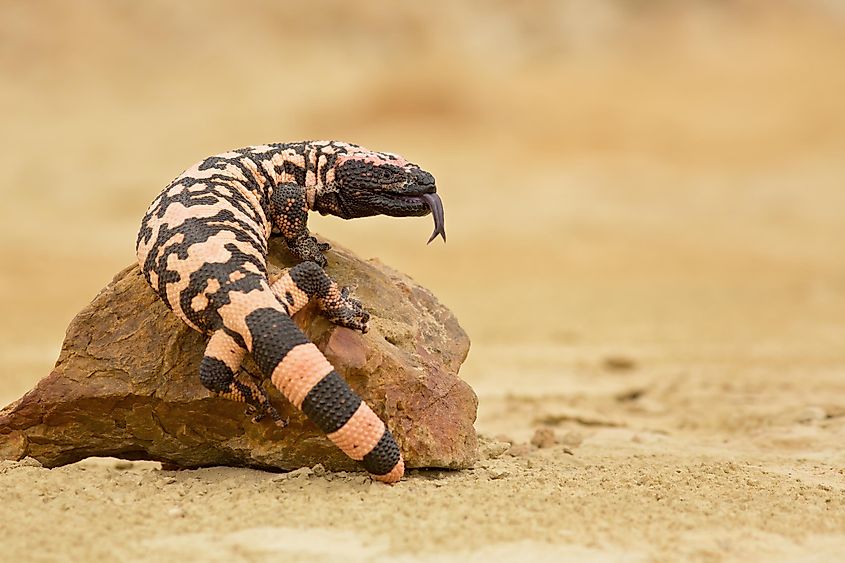
From deadly rattlesnakes to venomous large lizards called Gila monsters, whose bites are extremely painful but not fatal, the Mojave Desert can be a dangerous place for distracted visitors.
Although the bites from Africanized honey bees, better known as the killer bees, are as threatening to human health as a regular bee's sting, they tend to attack in large groups which makes them deadlier, pursuing their prey for long periods of time, and are especially dangerous if their hive is disturbed. Adding to the mix is the largest mammal on land, the Mountain Lion, a solitary animal, but known to target smaller prey such as children.
There are many more animals in the Mojave Desert that do not pose harm to curious tourists, and unfortunately, 24 of them are endangered within the California Desert Conservation Area. This includes the desert tortoise and the Devil’s Hole pupfish, whose only home in the world is in the watering holes around the desert. Bighorn sheep and black-tailed jackrabbits are also commonly encountered by wanderers.
Plants
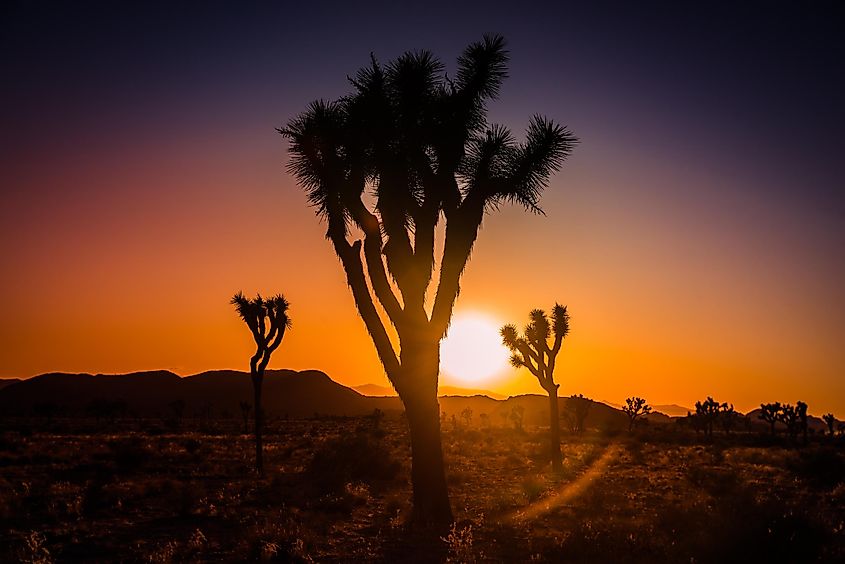
Found mostly at higher elevations, the Joshua tree is one of the tallest plants of the region, among the meeker but more common bushes, cacti and grass. The small white bells of the Creosote bush can also be found higher up, while the Spanish Dagger, a palm-reminiscent tree-shrub with a chaos of long pointy leaves growing in all directions from its head, is found lower.
A more delicate Mojave Yucca with yellow flowers, sagebrush varieties, shadscale, and bladder-sage with white or pink flowers, are the other prominent bushes of the desert. Cacti thrive in the drier areas with coarse soil.
Environment Of The Mojave Desert
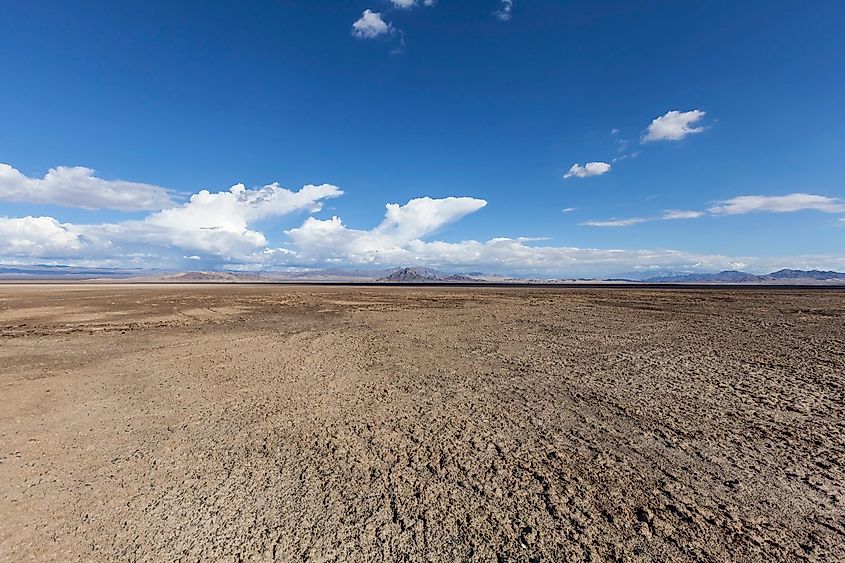
It is no surprise that the Mojave Desert served as an interstellar setting for the movies such as Star Trek and Fear and Loathing in Las Vegas. Aside from otherworldly views, here are other natural spotlights that have important functions in the Mojave Desert.
One of the most significant dry lakes in this desert, the Soda Lake (Soda Dry Lake) is a remnant of the Ice Age Lake Mojave. Sitting at the final point of the Mojave River with no outlet into the sea, the lake leaves behind sodium carbonate and sodium bicarbonate alkaline evaporites as it dries. It only gets modestly reimbursed by more rainwater and some drainage from the river. Flowing underneath the lake is the Mojave River, resurfacing shyly and infrequently. The eastern edge of the desert boasts the Colorado River and Lake Mead.
The Pacific Crest Trail (Pacific Crest National Scenic Trail) runs for 2,650 miles (4,265 km) through wilderness, connecting the border of Canada near Castle Peak, Washington, to the Mexican border near Campo in California, following the relief of the Cascade and Sierra Nevada mountain ranges along the way. It passes through seven national parks and dozens of official wilderness areas and forests and is thoroughly enjoyed by hikers and horseback-riding enthusiasts.
Human Settlements Of The Mojave Desert
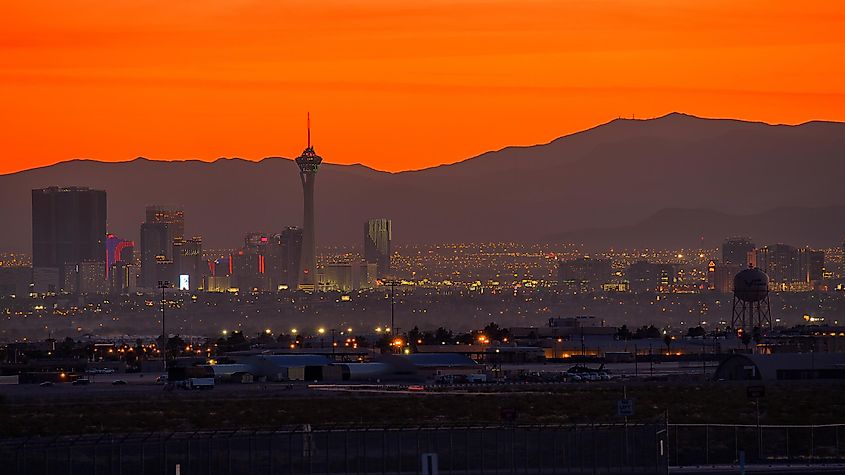
Today, the Mojave Desert is urbanizing faster than ever before, with highways, military bases, off-road vehicles, hunting, mining, grazing, and farming becoming a normal scene in this once barren environment. There are also a number of ghost towns in the Mojave Desert, including Calico, the abandoned silver-mining town in California. More recently, when Route 66 went out of use being replaced by Interstates, other ghost towns formed along the abandoned ex-highway. The World's Largest Thermometer (134 feet), located on Interstate 15 in Baker, California, is a major tourist attraction and has reportedly recorded the highest temperature in the region.
The north-western part of the desert is known for pastures, while south from there has succumbed to major urbanization, encompassing Las Vegas, Nevada, Lancaster, as well as hosting the Joshua Tree National Park and several US military installations.
Conservation Of The Mojave Desert
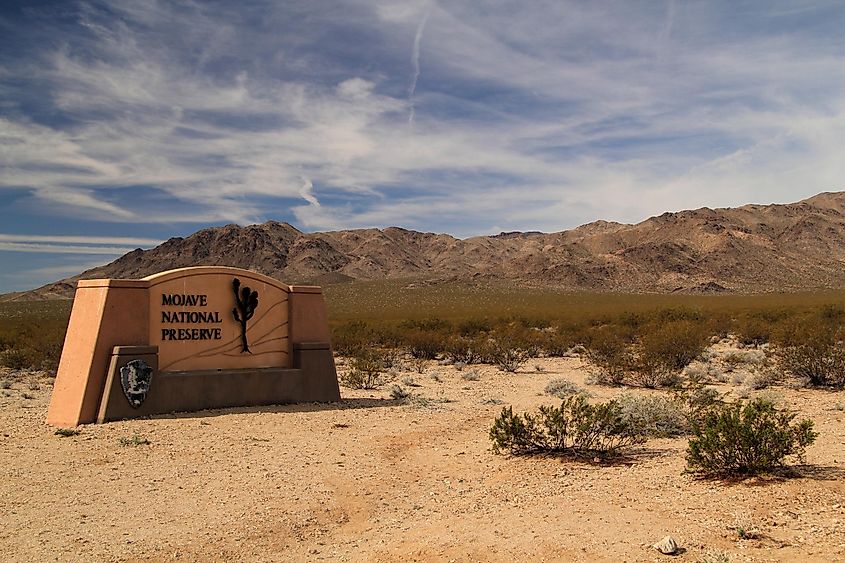
Historically and to this day, the Mojave Desert has been treated with a relative grace by its human inhabitants. The environment and species are some of the best-protected biomes in the United States, which has only been strengthened by the California Desert Protection Act.
Not void of grievances, the most threatened areas are the southwest and east-central portions. Many of the lower elevation valleys are privately owned, which makes the creosote bush areas vulnerable to off-road vehicles and development, while grazing is damaging mid-elevation pastures. On the natural side, the Tamarisk weed competes with other plants, while the non-native wildlife makes living difficult for chuckwallas, the Gila Monsters, and desert tortoises.
Historical Insights Of The Mojave Desert
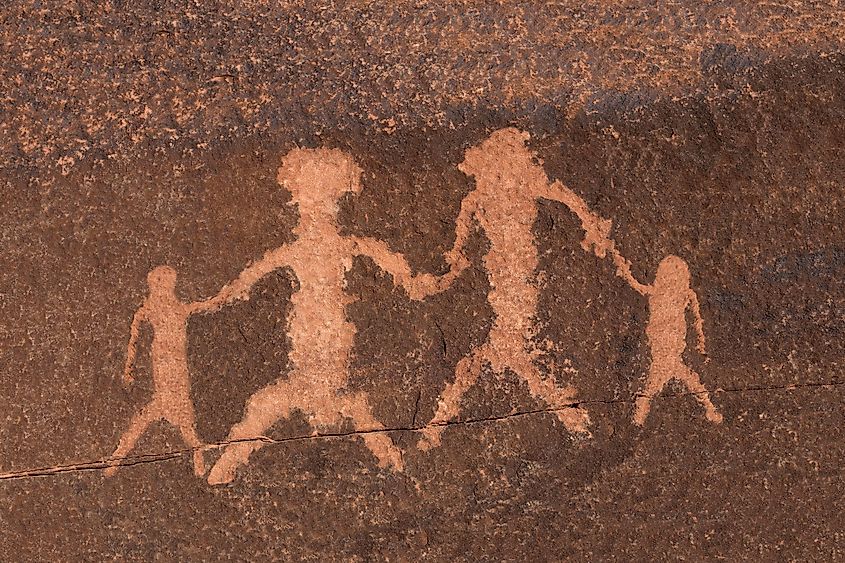
The Mojave Desert was named after the Indigenous Mojave Americans who inhabited these lands for thousands of years.
Almost two centuries ago, the Mojave Road was a well-known threat to travellers and traders for its lack of water, especially needed during the difficult climbs along the way and long stretches of barren land. The trespassers including caravans and soldiers were also treated with hostility, at best, by the Indigenous tribes of the region.
Finding a solution with the installation of a railway solved all of the problems. Thus, travel through the desert was made much more efficient and bearable in 1906, by connecting the south and building stop points en-route.
